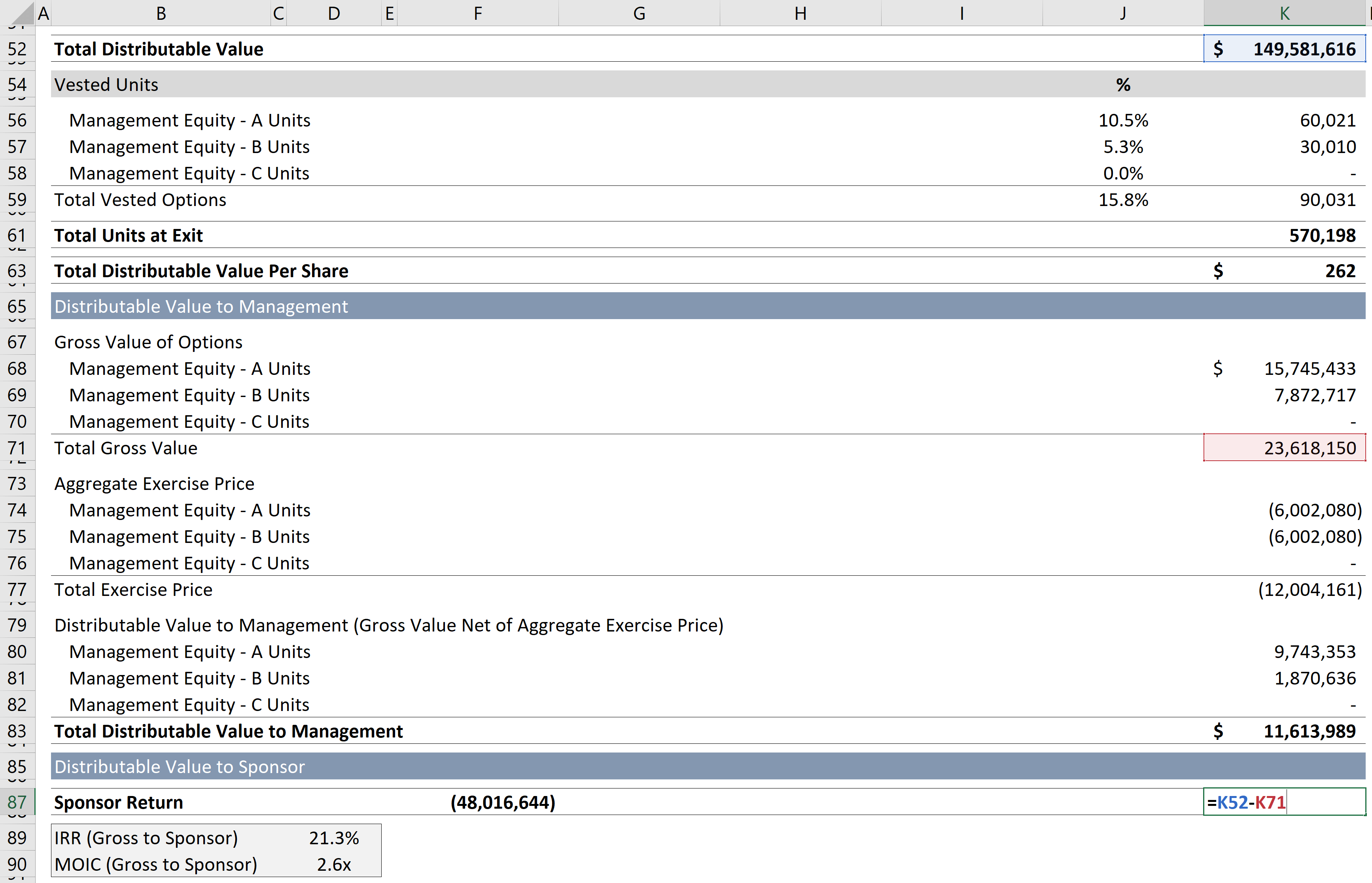Summary Text
In this lesson, we will discuss two key updates to the basic exit analysis discussed in prior lessons. The first is the addition of multiple tranches of management options, and the second is the allocation of sponsor proceeds between the limited partners (“LPs”) and the general partner (“GP”) by means of an equity waterfall.
In a prior lesson, we discussed management equity incentives – why they’re used, the different forms they can take and how to model a basic, single tranche management options distribution. As alluded to in that lesson, though, in a real private equity transaction, it is rare to encounter an option structure that is this simple. Why? Because more complex option structures can be used to better align management and investor incentives. In addition, for both tax reasons and broader reasons of fairness and incentive alignment, employees who join the company post-acquisition will often be granted options that vary in their strike prices and vesting conditions from the original options issued when the transaction closed. These “late joiners” are not something we model here, but it is not unheard of for PE funds to incorporate additional follow-on options grants in their pre-transaction modeling if they know, for example, that they will need to make a key hire (CEO, CFO, etc.) a year or so into their hold period.
With regards to upfront incentive alignment, let’s walk through a quick example that helps illustrate why an option structure with multiple tranches (a “tiered” option structure) is often appealing to private equity investors. Let’s say a PE fund is preparing to acquire a business where the deal team believes a 2.0x MOIC or even a 3.0x MOIC exit is attainable. The deal team admires the CEO, but wants to make sure he or she is incentivized to work hard to pursue the growth opportunities required to deliver a stellar exit. If a single tranche option structure is put in place, where the CEO is entitled to options representing 10% of the fully diluted ownership of the company with a strike price of $100 (the entry share price for the deal, representing a 1.0x MOIC for investors), the CEO will obviously get more money as the value at exit increases, as long as the value per share is above the entry share price. However, if they also put in place another option tranche offering an additional 5% ownership with a strike price of $200 (2.0x MOIC) and/or $300 (3.0x MOIC), this provides a “sweetener” if the CEO delivers growth that pushes the value at exit over these thresholds, potentially nudging the CEO to go the extra mile to achieve an ambitious growth plan.
Per the introduction, this lesson will also cover the LP / GP split. Setting aside the options discussion above, there is one additional schedule needed to properly allocate returns across the different parties involved in a deal, namely the split of sponsor returns between limited partners (LPs) and the general partner (GP). As a reminder, LPs are investors (pensions, endowments, sovereign wealth funds, wealthy individuals, etc.) who provide capital for private equity firms or independent sponsors to pursue deals either on a committed basis, meaning they pledge a set amount to a fund and must participate pro rata in all its deals, or on a discretionary deal-by-deal basis, meaning they pick and choose which deals to participate in. The GP, meanwhile, is the private equity firm itself, which is entitled to a portion of returns known as a “performance fee” on exit.
Please download the PDF notes and associated Excel workbook for more information.



